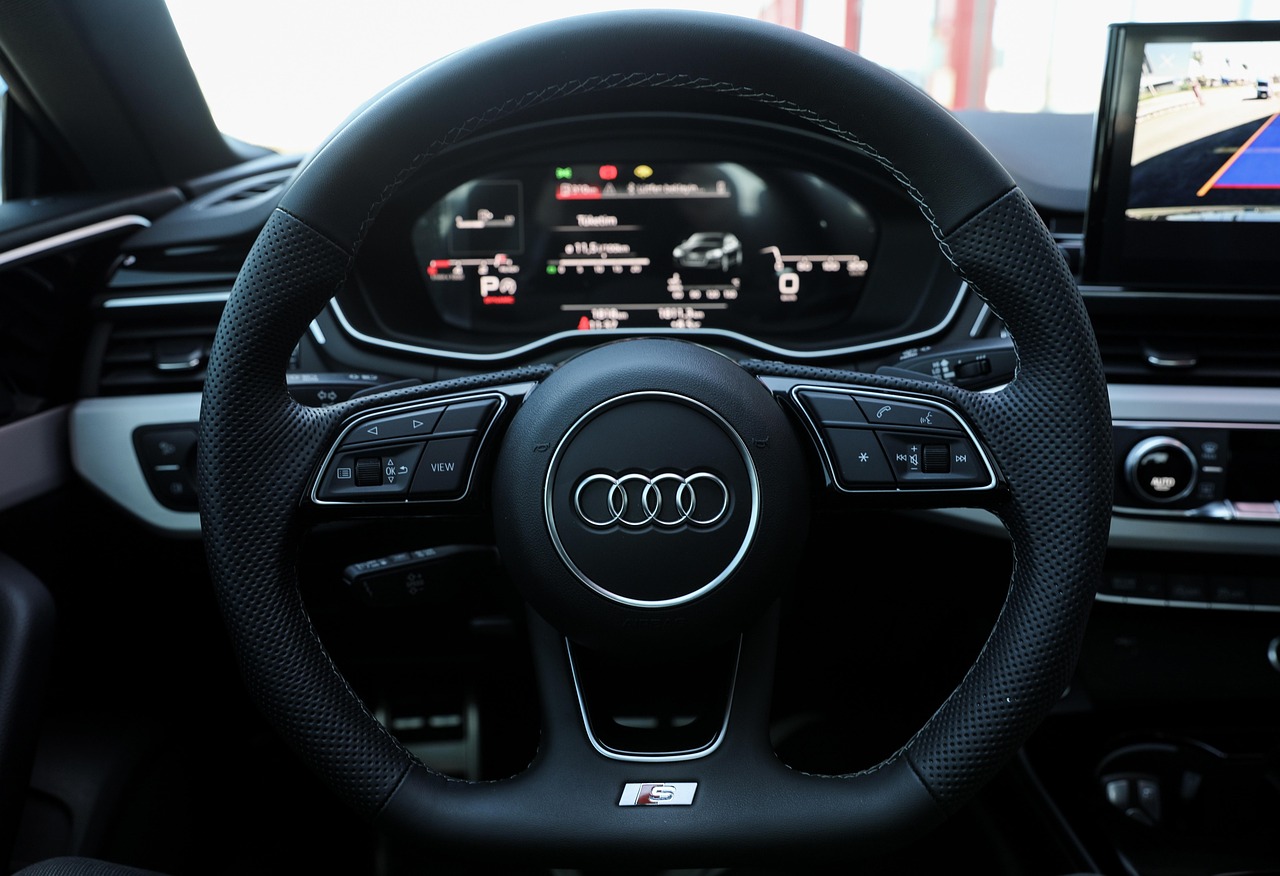Being a company owner, you likely have a personal vehicle or car Efficiently that you may or may not manage through your company. There are two common approaches for handling the business portion of private vehicle expenses:
Own the Car Personally and Charge Mileage: You can own the car personally and charge your company at a rate of 45p per mile for any business miles driven.
Company Ownership with Benefit-in-Kind: The company owns the car, and you, as the Director, incur a ‘benefit-in-kind’ (BIK) tax charge for private use of the car.

Option I: Personal Car Ownership with Mileage Claim
Owning the car personally and charging the company for business miles is a popular method. The key benefit here is that the mileage amounts received are tax-free. HMRC’s approved rate of 45p per mile is designed to cover various vehicle costs, including maintenance, insurance, servicing, wear and tear, and depreciation. However, this method can be cumbersome due to the strict administrative requirements.
You must keep detailed mileage logs for each journey, including start and end points, mileage covered, and the purpose of the trip. This method can also fall short for high-value vehicles, as it doesn’t fully compensate the owner for the actual running costs, such as insurance, servicing, maintenance, and depreciation. For example, the method makes no distinction between someone owning a Ford Fiesta and someone driving a Ferrari, which can result in significant financial inefficiencies.
Option II: Company car Efficiently Ownership with Benefit-in-Kind
When the company owns the vehicle, and you use it for both business and personal purposes, you face a ‘benefit-in-kind’ (BIK) charge. This charge is based on the vehicle’s CO2 emissions and can be as high as 37% of the vehicle’s list price. It’s important to note that the BIK is calculated based on the car’s list price when new, regardless of whether the vehicle was purchased second-hand or has depreciated over time.
The ‘benefit-in-kind’ charge can make this option expensive, especially for vehicles with high CO2 emissions. For instance, if you’re driving a Land Cruiser valued at £80,000 with CO2 emissions over 215g/km, the BIK could be £29,600 (assuming without additional 4% surcharge for diesel cars). The Director would then pay income tax of £11,840 and National Insurance of £3,590. Additionally, the company would need to pay employers’ National Insurance of £4,085, leading to a total tax cost of £19,515 annually.

A More Tax-Efficient Alternative way to Run your Car : Using an LLP or Partnership
If these figures have you concerned, there is a more tax-efficient way to manage your vehicle expenses—running your car through an alternative entity such as a general partnership or an LLP (Limited Liability Partnership).
The tax treatment of vehicles owned by a partnership or LLP differs significantly from those owned by limited companies. Unlike the BIK charges imposed on company-owned vehicles, there is no BIK charge when a vehicle is owned through a partnership or LLP. Instead, the vehicle is considered an asset of the partner, available for private use.
This means that business-related costs such as fuel, servicing, insurance, and maintenance are allowable for tax purposes against the income generated by the partnership or LLP. For this method to be effective, the partnership must have some commercial substance, such as operating a consultancy business or an offshoot of the trade previously run by the limited company.
If the partnership has a legitimate commercial basis, you can achieve full tax relief at the higher rate of 40% on most vehicle-related costs. Typically, it is possible to agree with HMRC on a business use percentage of around 75%-80%, allowing you to offset 75%-80% the total car running costs against the income of the partnership. This approach can save you thousands of pounds annually compared to the other two methods.
Consider a BMW vehicle costing £40,000 with CO2 emissions of 160g/km and a total annual mileage (business and personal) of 20,000 miles. Assuming only 5,000 miles were officially logged as business mileage, but an average of 75% of car use was for business purposes, the following is a comparison of costs over three years:
3 YEARS SUMMARY of car Efficiently
| Costs | Limited Company (£) | Personal (£) | LLP (£) |
| . | |||
| Motor Expenses | 20,180 | 20,180 | 20,180 |
| Benefit in Kind – Company Cost | 7,392 | – | – |
| Benefit in Kind – Individual Cost | 22,012 | – | – |
| Total Costs | 49,584 | 20,180 | 20,180 |
| Tax Relief | (9,916) | – | (8,072) |
| Net Cost | 39,668 | 20,180 | 12,108 |
| Private Use Adjustment | – | – | (3,027) |
| Net Cost After Adjustment | 39,668 | 20,180 | 9,081 |
| Capital | |||
| Vehicle Cost | 40,000 | 40,000 | 40,000 |
| Writing Down Allowances | 9,000 | – | 19,000 |
| Tax Relief on Allowances | (1,800) | – | (7,600) |
| Net Capital Cost | 38,200 | 40,000 | 32,400 |
| Income | |||
| Mileage Allowance | – | 6,750 | – |
| Sale Proceeds | 15,000 | 15,000 | |
| Total Income | 15,000 | 21,750 | 15,000 |
| Total Outlay | 62,868 | 38,430 | 26,481 |
As the above comparison shows, there are substantial savings to be had by running your car through an LLP – potentially up to £36,387 over three years compared to the other methods!
To maximize your tax efficiency, consider running your vehicle through an LLP. This approach can lead to substantial savings compared to running it personally or through your company. LLPs will however not be suitable under many circumstances so the full picture will need to be considered with your tax advisor when evaluating this option.

Frequently Asked Questions for car Efficiently
1. What is Benefit-in-Kind (BIK) tax for company car ?
BIK tax applies when an employee uses a company car for personal purposes, including commuting. The tax is calculated based on the car’s list price and its CO₂ emissions. Higher emissions result in a higher BIK percentage, increasing the taxable value. Employees pay tax on this value at their marginal rate, and employers may also incur National Insurance contributions.
2. How do I calculate the BIK tax on a company car Efficiently?
To calculate BIK tax:
- Determine the P11D value: This is the list price of the car, including VAT and any delivery charges, minus the first registration fee and road tax.
- Find the BIK percentage: This is based on the car’s CO₂ emissions.
- Calculate the BIK value: Multiply the P11D value by the BIK percentage.
- Determine the tax payable: Multiply the BIK value by your income tax rate (e.g., 20% or 40%).
3. What are Mileage Allowance Payments (MAPs)?
MAPs are payments employers make to employees who use their personal vehicles for business journeys. HMRC sets approved rates, known as Approved Mileage Allowance Payments (AMAPs), which are tax-free up to certain limits. citeturn0search1
4. What are the current HMRC mileage rates?
For the 2024/2025 tax year:
- Cars and vans: 45p per mile for the first 10,000 business miles, then 25p per mile thereafter.
- Motorcycles: 24p per mile.
- Bicycles: 20p per mile.
Additionally, you can claim 5p per passenger per business mile for carrying fellow employees on work journeys.
5. Can I claim tax relief if my employer pays me less than the approved mileage rates?
Yes, if your employer reimburses you at a rate lower than the HMRC approved rates, you can claim Mileage Allowance Relief (MAR) on the difference. For example, if you’re paid 35p per mile for the first 10,000 miles, you can claim relief on the 10p difference.
6. Are electric vehicles (EVs) subject to BIK tax?
Yes, EVs are subject to BIK tax, but at lower rates compared to traditional petrol or diesel cars. For example, the BIK rate for EVs is set to increase gradually from 2% in 2024/25 to 5% by 2027/28.
7. How does vehicle ownership through a Limited Liability Partnership (LLP) affect taxation?
In an LLP, partners are taxed individually, and vehicles owned by the LLP and used for business purposes may not attract BIK charges. However, it’s essential to ensure that the vehicle’s use aligns with business activities to maintain tax efficiency.
8. How often do HMRC mileage rates change?
HMRC reviews mileage rates periodically, but they can remain unchanged for several years. It’s advisable to check the latest rates on HMRC’s official website or consult with a tax professional for the most current information.
9. Do I need to keep records of my business mileage?
Yes, maintaining accurate records of business mileage is crucial. This includes dates, destinations, purpose of the trip, and miles traveled. Proper documentation supports your claims and ensures compliance with HMRC requirements.
10. Can I claim mileage for commuting to and from work?
No, commuting from your home to your regular place of work is considered private travel and is not eligible for mileage claims. Only journeys made for business purposes, excluding regular commuting, qualify.
For personalized advice, it’s recommended to consult with a tax professional or refer to HMRC’s official guidelines.
Checkout our other Tax Saving Articles
-
Navigating the HMRC VAT Return: An Expert Guide for UK Businesses
Registration and Core Principles of VAT What is a VAT Return and Why Does HMRC Demand It? The Value Added Tax (VAT) return is a mandatory compliance document that businesses registered in the United Kingdom must submit to His Majesty’s Revenue and Customs (HMRC).1 Typically, this submission is required every three months, a period known…
-
Begin Winning on Crown Green Casino Today – Special Offers
Begin Winning on Crown Green Casino Today – Special Offers Welcome to the exciting world of Crown Green Casino, where the thrill of gaming meets unbeatable special offers. Crowngreen If you’re looking to begin your winning journey in online gaming, you’ve landed in the right place. In this article, we’ll explore the various special offers…
-
Begin Winning on Crown Green Casino and Discover the Magic of Play
Begin Winning on Crown Green Casino and Discover the Magic of Play Welcome to Crown Green Casino, your go-to online gaming destination that brings the thrill of the casino directly to your screen. With an impressive array of games, thrilling promotions, and an intuitive interface, Crown Green Casino promises an unparalleled gaming experience where excitement…
